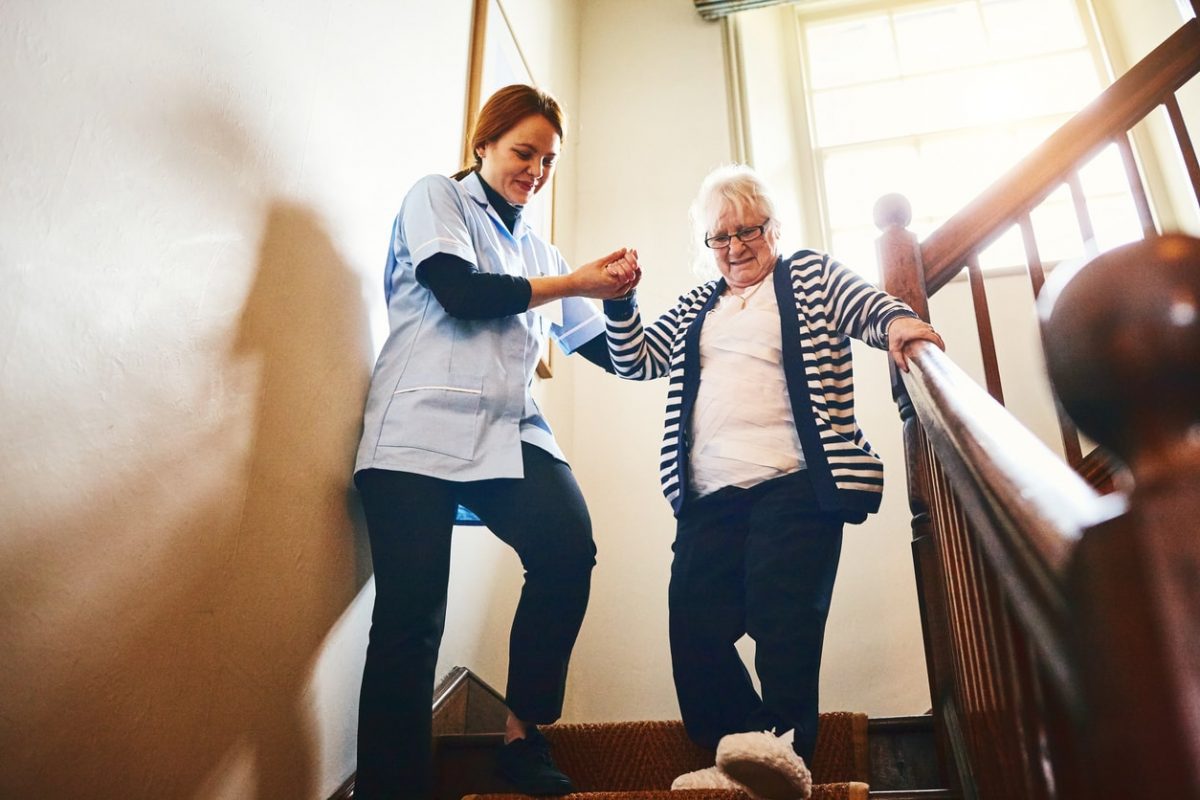Throughout the healthcare industry, there are many challenges caregivers face when transferring or lifting patients. Patient handling is a critical aspect of the healthcare profession. In the home health sector, patient movements performed by home health care providers present even more risks; improper patient handling procedures can lead to severe injuries on the part of the caregiver and patient alike. Insurance for home health care providers is only one part of a comprehensive risk management plan, and implementing best practices and procedures to use when moving, transferring, or repositioning patients can further protect home health workers and those they are charged with caring for.
Caregiver Injuries: An Overview
Musculoskeletal injuries are the leading cause of lost productivity in the healthcare field. Caregivers, including nurses and nursing assistants, experience injury rates at higher levels than industries like logging and manufacturing. According to the U.S. Department of Labor, the incidence rate (IR) of workplace-related injuries in healthcare was 166.3 incidents per 10,000 workers, resulting in nearly 20,000 days away from work.
Common injuries in the healthcare field include:
- Sprains and strains
- Joint injuries
- Mid- and lower-back injuries
- Shoulder injuries
Injuries range from minor cases to those that create chronic, life-changing pain for healthcare workers. In severe injury cases, the injuries received may lead to permanent disability. The high level of injuries in the healthcare field takes its toll; it is estimated that it costs the industry about $20 billion in both direct and indirect expenses, and results in the loss of talent as injured workers are forced to leave the profession.
Unique Injury Risks in Home Health Care
While injury rates among healthcare workers are high across the industry, home health care workers face even more challenges. Patient repositioning and lifting tasks are often handled by specialized lifting equipment and so-called “lift teams” in facilities like hospitals and long-term care units. Home health care workers, by contrast, may not have access to these safety measures and must conduct patient handling tasks on their own. Home health care providers may feel pressured to conduct unsafe patient handling operations, even as the prospect of receiving an injury soars.
Patients may also become injured as a result of unsafe lifting and handling practices, opening the door to claims of negligence on the part of the caregiver and his or her employer. Costs associated with legal claims can run into the millions of dollars, negatively impacting the delivery of care. Insurance for home health care providers is designed to provide financial protection against liabilities. More importantly, however, caregivers must adhere to safe handling procedures at all times to protect themselves and their patients from injury.
Safe Patient Handling Procedures: Solutions
For patients and caregivers alike, safe handling and positioning procedures are paramount in reducing injury risks. A group of initiatives called Safe Patient Handling and Mobility (SPHM) has helped to reduce the injury rate among home health care providers. Currently, 11 states have SPHM regulations or laws in place, which is expected to spur other states to adopt similar laws.
Safety begins with training caregivers and support staff in proper patient handling techniques. With this training, caregivers can reduce injury risks substantially. The next step is for home health care companies to evaluate specific patient needs, identifying those patients that may need frequent handling and preparing caregivers for those demands. Investing in specialized lifting equipment and devices may be required; in other cases, having additional staff members present to assist with lifting and repositioning tasks can help reduce injuries.
Finally, home health caregivers and their employers should establish workplace safety as a foundational approach. Safer workers mean greater productivity and reduced costs for medical expenses and lost wages resulting from injuries. Coupled with insurance for home health care providers, these steps can protect caregivers and the patients they care for from the risks associated with transfers, lifting, and repositioning tasks.
About Caitlin Morgan
Caitlin Morgan specializes in insuring assisted living facilities and nursing homes and can assist you in providing insurance and risk management services for this niche market. Give us a call to learn more about our programs at 877.226.1027.


